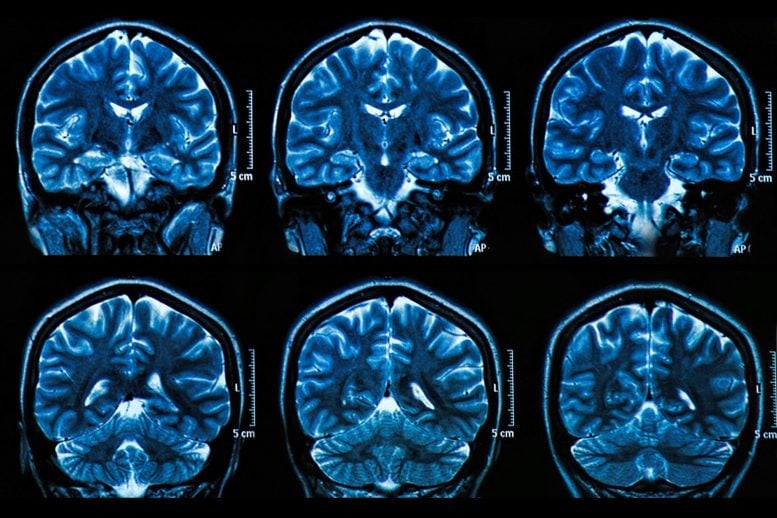Cracking the Code of Age-Related Memory Decline

An investigation led by scientists at the University of Texas at Dallas has revealed that the process of age-associated memory decline is linked to intricate modifications in the neural system. This discovery counters prevailing theories and accentuates the necessity for more detailed studies on cognitive aging.
The University of Texas at Dallas Center for Vital Longevity (CVL) team has unearthed that the brain correlates of memory deterioration due to aging involve more intricate factors than previously acknowledged. This could potentially impact strategies for maintaining cognitive wellbeing in the elderly.
Professor Michael Rugg, the Director of CVL and a faculty member of the School of Behavioral and Brain Sciences, is the leading author of this study. It was first featured online on November 30 and later in the January 24 print version of The Journal of Neuroscience. The paper details how multiple mechanisms drive age-related neural dedifferentiation, which is characterized by reduced functional specialization of various brain regions.
The study highlights that as people grow older, even while remaining in good health, the accuracy with which the brain represents different categories of visual information in the visual cortex diminishes. This decline in neural selectivity, or dedifferentiation, corresponds to impaired memory performance.
By employing functional MRI (fMRI), the investigators analyzed the brain activity patterns of the participants as they observed images that were classifiable into broad groups of panoramic scenes and objects. Some of these images were shown more than once, thus enabling researchers to measure brain activity patterns stimulated by image categories as well as individual stimulus items. The participants consisted of healthy, young and old adults — 24 individuals who averaged 22 years and another 24 averaging 69 years.
A paper studying neural dedifferentiation, age, and memory abilities was published in The Journal of Neuroscience by both Ph.D. scholar Sabina Srokova (2022) and Dr. Michael Rugg, the head of the Center for Vital Longevity. The University of Texas at Dallas and the Center for Vital Longevity provided credit for this study.
“The older group, as we anticipated, displayed reduced scene selectivity at the category level in comparison with the young group, but not for objects,” commented Rugg. “However, when examining individual items, selectivity for both scenes and objects was decreased in the older group. This implies that the mechanisms causing dedifferentiation at the individual item level differ from those at the category level. Until now, we presumed it was caused by the same mechanism.”
Rugg added, “The concept of age-related neural dedifferentiation is not a one-size-fits-all theory. This holds significant implications for our comprehension of, and research into, age-related variances in neural selectivity.”
The inference, Rugg said, is that an individual’s category-specific neural selectivity does not predict its individual item selectivity.
Rugg, who is also the Distinguished Chair in Behavioral and Brain Sciences, reiterated, “There isn’t a single principle explaining age-related neural dedifferentiation. This is pivotal for our understanding and exploration of age-related differences in neural selectivity, an aspect owing to memory performance. As we move forward, we need to be prudent while generalizing the findings at the category level to the broader changes in the brain occurring with aging.”
Co-author Sabina Srokova, a former student of Professor Rugg who is currently a research associate at the University of Arizona, commented that the findings indicated at least two distinct factors contributing to the decline in selectivity in older adults.
“Category-level selectivity’s underlying neural mechanisms have a robust relation to memory success throughout the adult lifespan,” said Srokova. “But, the factors linking neural selectivity, aging, and memory abilities are still unknown. Having discerned different neural mechanisms related to category and item contexts, it is imperative to further analyze them separately.”
The research team now plans to study the factors leading to age-related reductions in category-level selectivity by simultaneously recording eye movements during fMRI scanning.
For reference, the paper titled, “Dissociative Effects of Age on Neural Differentiation at the Category and Item Levels” was co-authored by Sabina Srokova, Ayse N. Z. Aktas, Joshua D. Koen, and Michael D. Rugg and was published in the Journal of Neuroscience on January 23, 2024.
Among the other contributors to the study were Dr. Joshua D. Koen, formerly a postdoctoral fellow in Rugg’s functional Neuroimaging of Memory laboratory and lab research assistant, Ayse Aktas.
The work was funded by the National Institute on Aging, a component of the National Institutes of Health (R56AG068149 and RF1AG039103), and by the nonprofit organization BvB Dallas.




